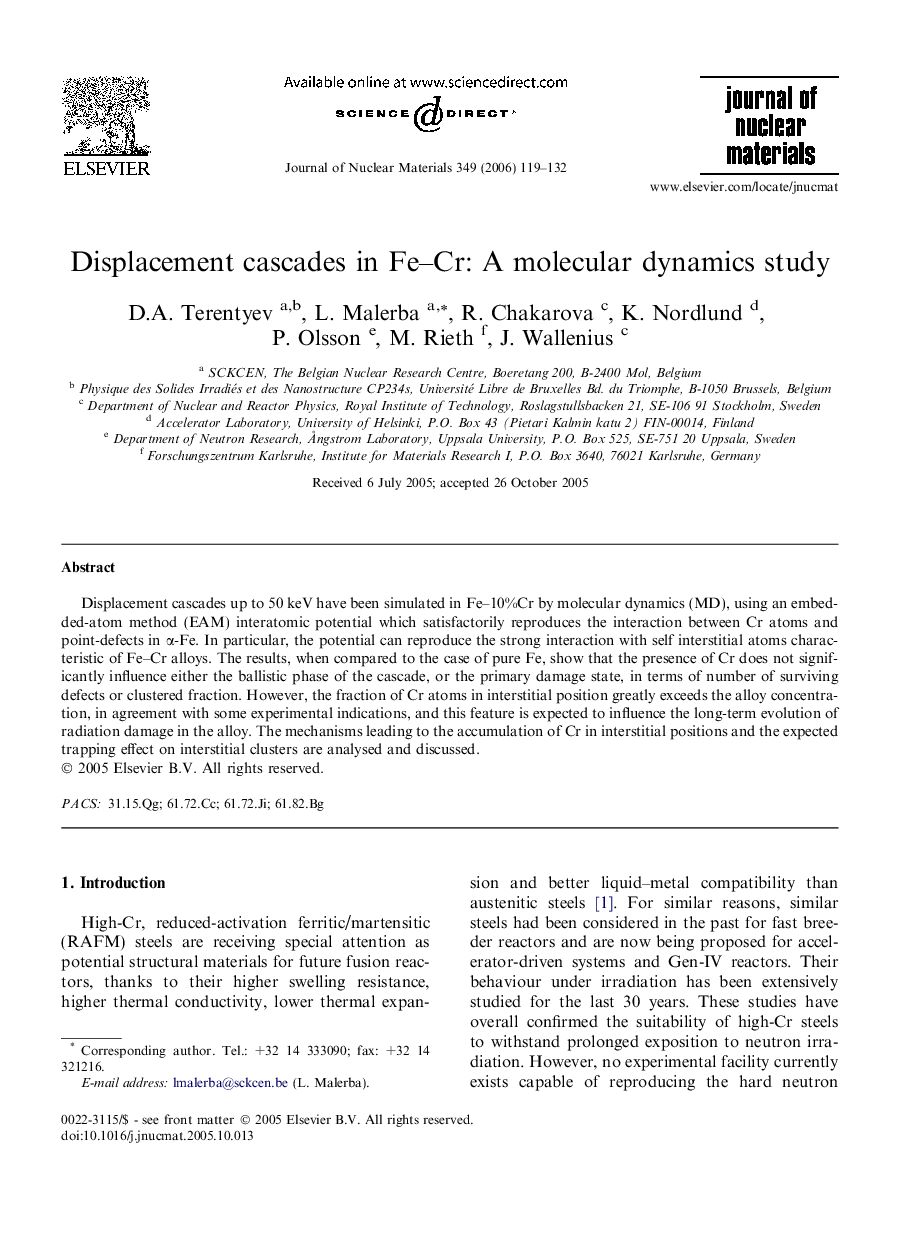| Article ID | Journal | Published Year | Pages | File Type |
|---|---|---|---|---|
| 1569972 | Journal of Nuclear Materials | 2006 | 14 Pages |
Displacement cascades up to 50 keV have been simulated in Fe–10%Cr by molecular dynamics (MD), using an embedded-atom method (EAM) interatomic potential which satisfactorily reproduces the interaction between Cr atoms and point-defects in α-Fe. In particular, the potential can reproduce the strong interaction with self interstitial atoms characteristic of Fe–Cr alloys. The results, when compared to the case of pure Fe, show that the presence of Cr does not significantly influence either the ballistic phase of the cascade, or the primary damage state, in terms of number of surviving defects or clustered fraction. However, the fraction of Cr atoms in interstitial position greatly exceeds the alloy concentration, in agreement with some experimental indications, and this feature is expected to influence the long-term evolution of radiation damage in the alloy. The mechanisms leading to the accumulation of Cr in interstitial positions and the expected trapping effect on interstitial clusters are analysed and discussed.
